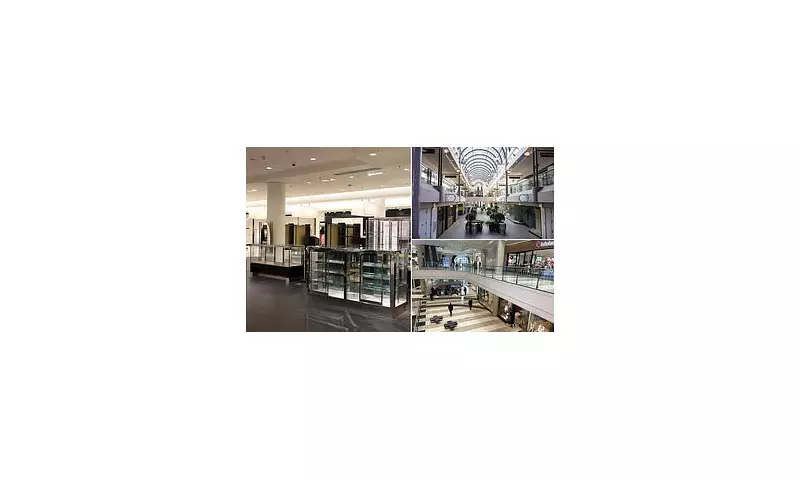
One of San Francisco's most iconic shopping centres has been sold for a mere fraction of its former billion-dollar valuation, marking a dramatic fall from grace for what was once the city's premier retail destination.
From Shopping Hub to Ghost Mall
The San Francisco Centre Mall, previously known as the Westfield Emporium, was auctioned off to lenders Deutsche Bank and JPMorgan Chase for just $133 million (£105 million) - a staggering decline from its $1.2 billion (£950 million) valuation nearly a decade ago.
Before the Covid-19 pandemic transformed shopping habits, the seven-story behemoth served as a bustling hub for both residents and tourists, attracting crowds with its vibrant atmosphere and prestigious brands. However, the combination of pandemic shutdowns, rising crime rates, and the shift toward online shopping proved devastating for the property.
Precipitous Decline in Value
By the end of 2022, the property's value had already plummeted to $290 million (£230 million), representing a 76% drop from its pre-pandemic peak. The final auction price of $133 million means the mall sold for less than half its already diminished appraisal value.
The mall's previous owners, Unibail-Rodamco-Westfield and Brookfield Properties, defaulted on loan payments in 2023, forcing them to relinquish control to a court-appointed receiver. At the time, Westfield pointed to 'unsafe conditions' and 'lack of enforcement against rampant criminal activity' as primary factors in the mall's deterioration.
'Given the challenging operating conditions in downtown San Francisco, which have led to declines in sales, occupancy and foot traffic, we have made the difficult decision to begin the process to transfer management of the shopping centre to our lender,' the company stated last year.
Empty Corridors and Lost Anchor Stores
The departure of Westfield and Brookfield triggered an exodus of major retailers. Nordstrom shuttered its flagship store in 2023, with Bloomingdale's soon following suit. The mall's cinema also closed its doors, leaving vast sections of the 1.5 million square-foot complex empty.
According to the San Francisco Chronicle, the mall currently has only leased 9% of its storefronts, creating an eerie atmosphere that contrasts sharply with its bustling past.
'Coming in, you're expecting so many stores, you know, like a typical mall but it's not that at all,' Romel Pacheco told CBS News during a recent visit.
Another visitor, Erick Linares, noted the property's untapped potential: 'It's such a beautiful building and it's in a prime location, but it's just really empty. So, it's kind of odd.'
Long-time San Francisco resident Paula Reinda, who managed a store in the mall during the 1990s, expressed shock at the transformation. 'It was bustling. It was so busy you couldn't even walk. So, seeing it like this is just unbelievable.' She added that with each visit, the mall appears 'emptier and emptier.'
A New Chapter for Downtown San Francisco?
The banks have enlisted real estate brokerage CBRE to find a new buyer for the property, with executives expressing optimism about the mall's future potential.
Kyle Kovac, Executive Vice President of CBRE, stated: 'Amid renewed civic leadership, three consecutive years of positive population growth and surging demand from artificial intelligence and technology firms, San Francisco Centre & Emporium is uniquely positioned to anchor the next chapter in downtown San Francisco's recovery.'
San Francisco Mayor Daniel Lurie echoed this sentiment, telling the San Francisco Chronicle that the foreclosure 'marks a critical step towards an exciting new chapter for this site and for Market Street.' He emphasised that 'with safe, clean streets and an activated Market Street, we can re-energise downtown and move our recovery forward.'
The San Francisco Centre's struggles reflect broader challenges facing shopping malls across the United States. Data compiled by Capital One reveals that an average of 1,170 shopping malls closed every year between 2017 and 2022, with projections suggesting up to 87% of large shopping malls may shut down over the next decade.
While the future purpose of the San Francisco Centre remains uncertain, its dramatic valuation collapse serves as a stark reminder of how quickly urban retail landscapes can transform in the face of economic pressures and changing consumer behaviour.





